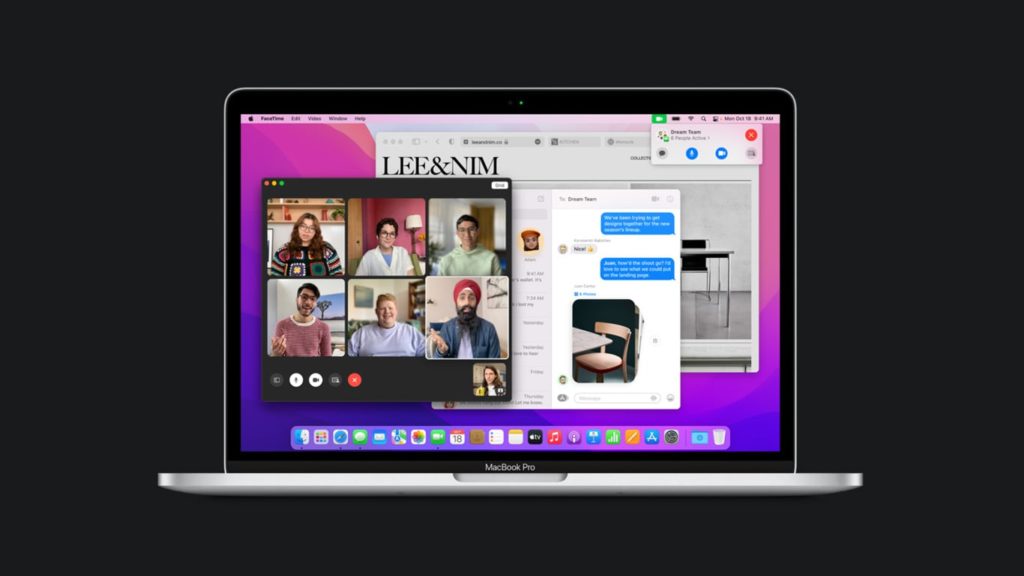
macOS Monterey is released with many notable features that offer an exceptional Mac experience. Not as extensive as Big Sur, but the update brings along many new features that make it worth upgrading. If you are looking for ways to update your MacBook to the latest macOS Monterey, you are in the right place. The users find no technical problems in upgrading to the latest version, but some experienced data loss in the form of deleted files and folders.
For the uninitiated, let’s first discuss how you can upgrade your Mac operating system to Monterey.
Well, before you take any action to upgrade the OS, make sure to backup your entire hard drive so that you can restore data in case anything goes wrong. You can use Time Machine or any other backup solution to get the job done.
Good to Know
Check that your Mac is compatible with running the latest operating system. Since older versions of MacBooks and Apple desktops, preferably 2015 or older, may not have enough power to run the latest operating system versions efficiently, it’s not recommended to upgrade the OS on those machines.
Also, ensure that sufficient space is available on the hard drive to successfully install Monterey on the device. Make sure that a consistent power supply is available and the device is connected to the power socket throughout the OS installation time.
Now, let’s move on to the upgrade process.
- Open System Preferences.
- Click Software Update.
- And then click Upgrade Now to start the installation process.
Do not click anywhere once the upgrade starts and wait for it to complete. The entire process may take several minutes, sometimes longer than usual, so be patient. Your computer will start several times during the upgrade process, and you may need to provide your administrator account credentials.
A majority of users may not find any data loss after the upgrade completes, but some may fail to locate several files on the computer. If you too experience data loss, there are a few ways you can find your data and restore it in its original format.
Method 1: Recover Deleted Files From the Trash
The Trash should be the first place to go in the case of data loss. If any of the files get deleted during the upgrade process, you can find them in the Trash. It stores recently deleted items for a period of 30 days until you remove them manually.
To restore data from the Trash can, open it and search for the files and folders that you are looking for. Right-click on the file and click Put Back to restore data to its original location.
Method 2: Restore From iCloud.com

If you are using iCloud for saving your important data or the hard drive items, you can restore the deleted files easily. Sign in to your account in iCloud.com and click Settings. Select the Restore Files option available under the Advanced tab and tick the checkbox available with each file you want to restore. Tap on the Restore Files.
iCloud gives users access to 5 GB of free storage space, which is sufficient to back up important files. You can upgrade to a paid plan if the need arises. You can free up system data storage by moving important files to iCloud and increasing its accessibility as you can access the data not just on a MacBook but also on your iPhone or iPad if you own them.
Method 3: Restore From Time Machine Backup
Time Machine, Mac’s native backup, and recovery tool give you the advantage of restoring from the most recent version as it auto-backup data regularly. If you experience data loss after upgrading to Monterey, here’s how you can recover the deleted files back using the Time Machine backup.
Connect the external hard drive or storage device that contains the most recent Time Machine backup. Open the Finder window, where you were storing the files before they were deleted from the system.
Now, click on the clock icon in the Menu bar to launch Time Machine and scroll through the list of backups to find the most recent one. Next, select the file that you want to retrieve and press Spacebar to preview its content. Click Restore to get the file back on your computer. The recovered item will be automatically stored in its original location.
If you wish, you can install and use a third-party data recovery solution for auto-recovery of deleted files. The automated data recovery apps are responsive and help recover multiple files at once without compromising the integrity of the actual structure of data contents.
Why Should You Upgrade to Monterey?

Although Big Sur is a great macOS, upgrading to the latest versions is always beneficial. You should upgrade to macOS Monterey to be able to share FaceTime with SharePlay and to get a better sound quality via new microphone modes.
It allows you to use the Messages app while you are using other apps on the Mac. The Safari browser in Monterey is more intuitive and highly customizable. It includes better privacy features that give enhanced security to your personal information.
The Low Power Mode will be of great use, particularly if you have an older MacBook that demands your due attention to battery life. Moreover, the new Notification appearance and settings are worth experiencing with the new upgrade, and so is the new Notes feature. Many new features are added to take full advantage of the M1 chip on the latest Mac models.
Before you upgrade, do not forget to check the system requirements and cross-check your device against it to ensure that it’s compatible to run the new upgrade.
Conclusion
As mentioned above, in the majority of cases, users do not find any issues while upgrading Mac to Monterey, be it compatible with the upgrade requirements. Having a backup will prevent you from losing your important data as you can easily recover the deleted files back on the computer.
